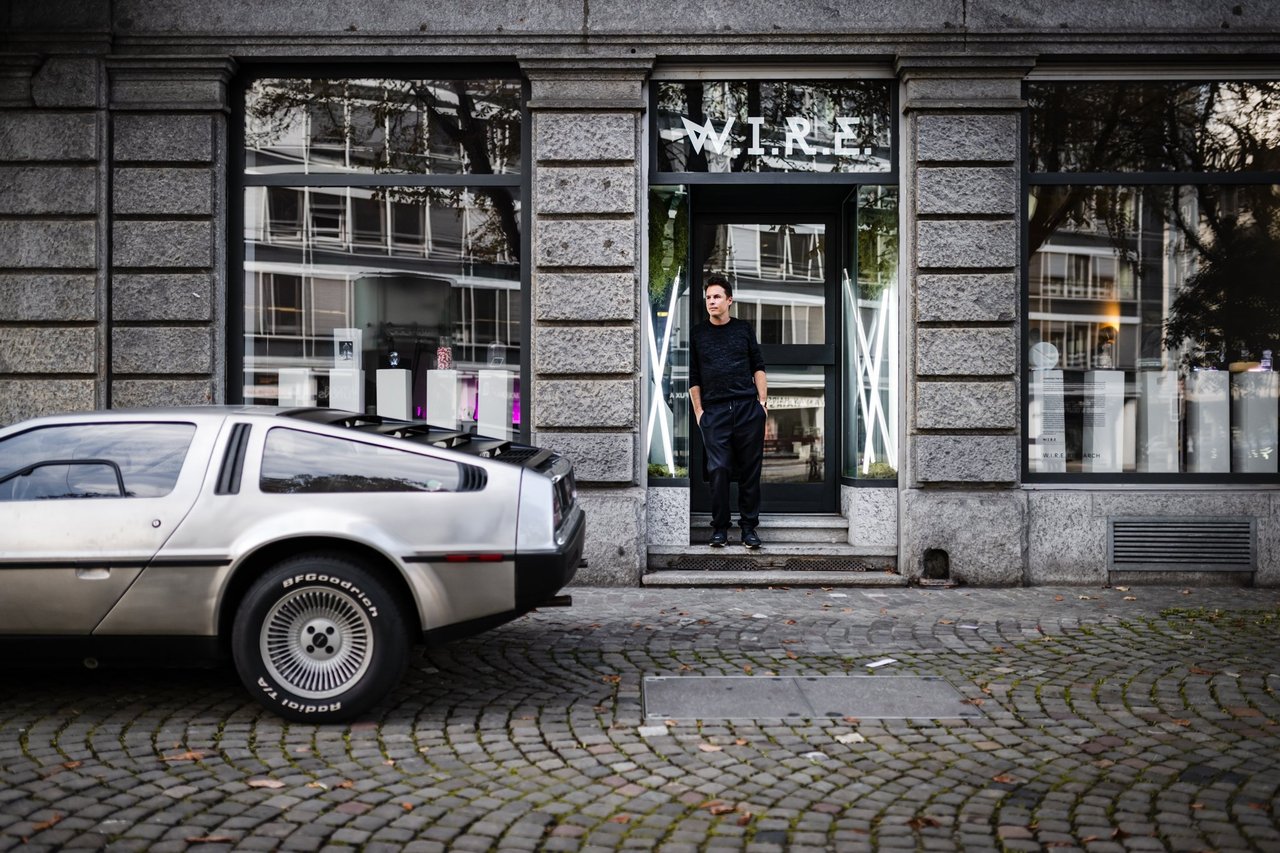
We meet Stephan Sigrist on a grey winter morning in front of the office of his think tank W.I.R.E. in Zurich’s district 4. And if the full name ‘Web for Interdisciplinary Research & Expertise’ had made us expect a slick Swiss consulting agency, we are already in for our first surprise. A brushed stainless-steel DMC DeLorean is parked in front of the entrance of the old town house, colourful neon tubes lean in the window right next to mysterious artifacts. Deeper into the room one can spot a neo-baroque library, while an artificial fire crackles in the fireplace, and a skeleton leans casually against an arcade video game console from the 1990s, grinning invitingly. “Everything changes, nothing disappears,” reads the black airport-style display board on the wall. The past and the future do not seem to be opposites here.
We first met Stephan a few years ago on a Flitzer Club road trip in the Swiss mountains. Back then, he and his wife and two daughters followed the ideal of the classic alpine Gran Turismo lifestyle in their family-friendly Ferrari 400. Today, he opens the door to us in a black-on-black minimalist outfit. A quick glance at the gold digital watch: it's time for our conversation about the past, present and future of the automobile.
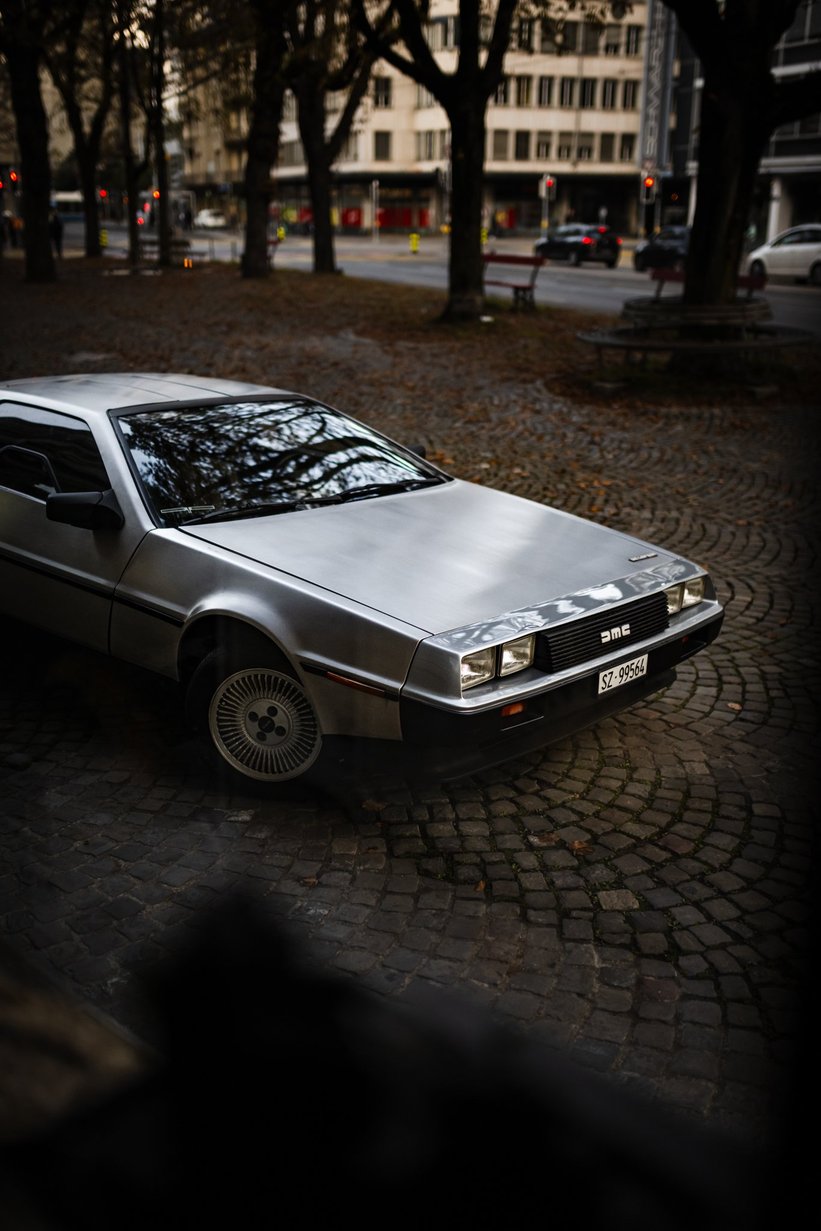

As a strategist and consultant, you are concerned with the future of mobility. At the same time, you own several classic cars: a DeLorean, a Ferrari 308 GT4, an Aston Martin Lagonda. How does that fit together?
Special cars fascinated me from an early age. Some of my first words were actually car brands – Ferrari, Jaguar, American manufacturers. My own first car was a Saab 900, a dark green US import with beige leather seats. Very beautiful, but unfortunately also very unreliable. My first positive experience with a classic car was with a Jaguar XJS. Since then, I have been fascinated by the timeless design, but also the driving experience and the quality of travel that these cars still offer us. What impressed me most about the DeLorean was the courage and foresight of its inventor, John Delorean: the reductionist design language was ahead of its time, the small engine was a forward-looking reaction to the rising energy costs and the decision to start production in Ireland added great value for the local community. The combination of this aesthetic, ecological and social vision fascinates me to this day. It also represents the mission of W.I.R.E., it’s a good ambassador for our cause.
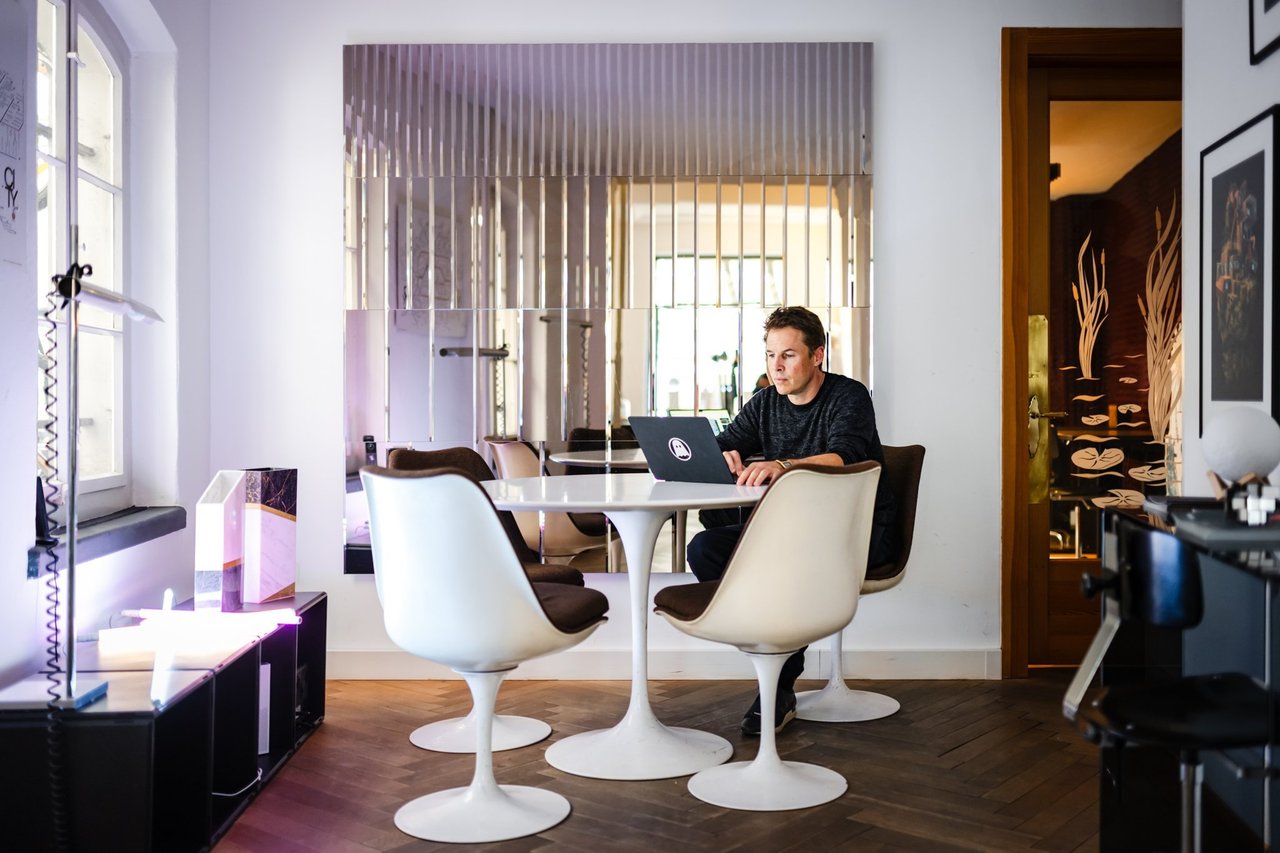
Today you head the interdisciplinary think tank W.I.R.E. in Zurich, with a focus on the early detection and consequences of new developments for business, science and society. How did you get into this?
Even as a child, I was enthusiastic about design and creation – the spaceships from Star Wars, but also synthesizers and the aesthetics of the computers of the time fascinated me a lot. Later, I studied molecular biology at the ETH in Zurich and then ended up in medical research. However, I found the development processes there to be lengthy; you work on small-scale drugs that will not be on the market for another ten years. The focus was not on the further economic or social consequences of these innovations, even though the products have a far-reaching influence on people's health and the healthcare market. At that time, I began to think about how the future of medicine could be shaped beyond products. This gave rise to the idea of founding a think tank that brings together different perspectives from technology, business, society, ecology and politics. One that systematically looks ahead and creates visions of the future in which technical developments are considered together with their effects on society.
How can I imagine this in concrete terms?
In the context of secret services, the term intelligence is used when referring to a strategic knowledge advantage. At W.I.R.E., it's about building a differentiated and in-depth understanding of a topic and thus creating a basis for decision-making for the organisations and companies we work with. Our customers today come from very different areas: In addition to healthcare, we work with a wide range of companies in the areas of finance, real estate, food, retail and mobility who need a broader understanding of innovation, one that goes beyond technology for their long-term planning. Instead of tunnel-visioned expert opinions, they look to us for the broadest possible panorama – which we then translate back into reality. Especially in major transformation processes, when it comes to dealing with AI or designing truly sustainable solutions beyond greenwashing, it is crucial to understand how things are related to one another. In addition, it is also important to bring some common sense back into the discussion. The individual specialist areas in research, but also in companies, are becoming more and more complex and an enormous level of expertise is required. However, with this focus comes the risk of losing the overall understanding and ignoring the consequences for people and society. But this is precisely what is essential for long-term successful business models or products.
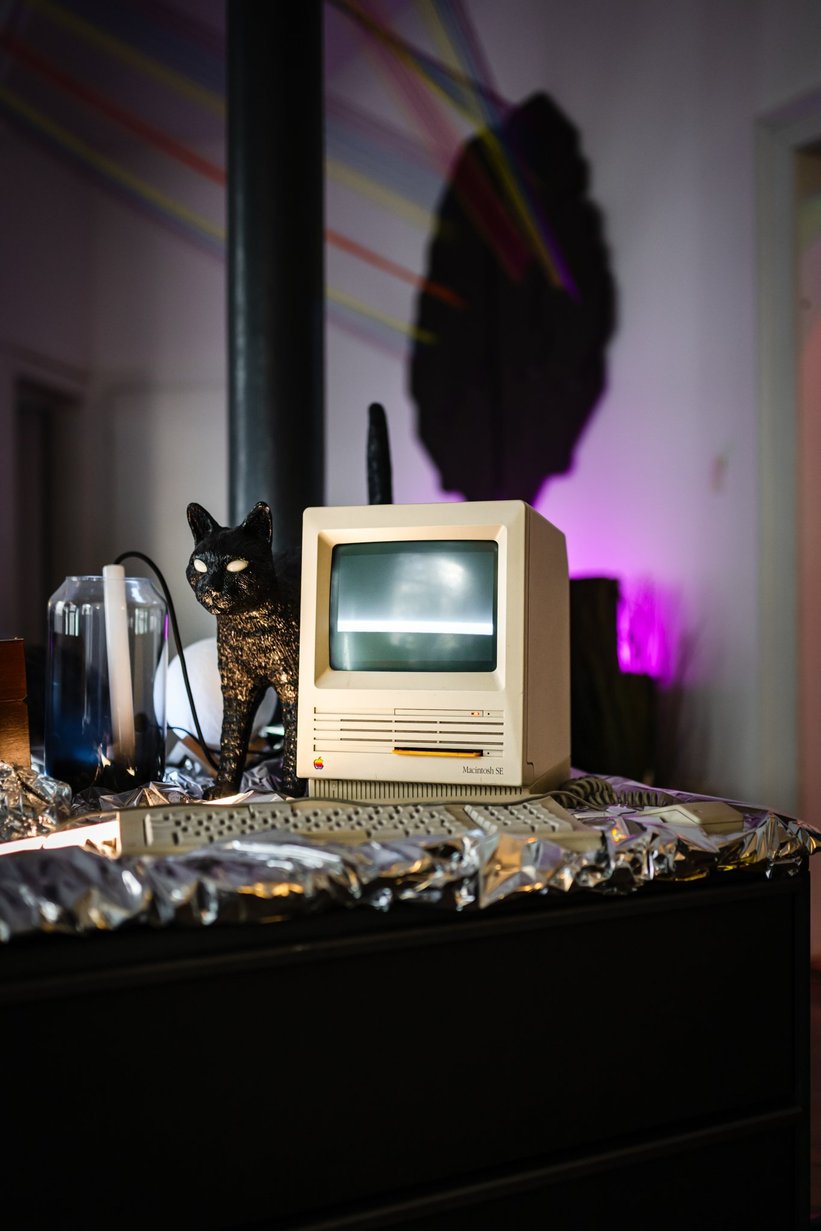

Many future topics, from the transformation of electromobility to artificial intelligence or alternative protein sources such as artificial meat, are highly polarising today. Where do you position yourself in this charged discourse?
There has long been a strongly positivist mindset that sees technological advances as the primary solution for a better future. The disruption model assumes that innovation is based on throwing traditional solutions overboard and completely replacing them with something new. Digitalisation, especially AI, is seen as an all-purpose tool to increase economic productivity and maximise people's decision-making ability. In fact, technology opens up new opportunities to outsource tasks from writing to image production or product design. However, we know that the results are sometimes flawed or that AI contributes to a convergence of the results.
So artificial intelligence is not the master key to innovation?
Instead of using AI wherever possible, we should ask ourselves what added value or differentiation these technologies can actually offer us. If buildings or cars designed based on training data are primarily variants of existing ideas, this can undermine the unique selling points of companies, and the cost savings will not lead to long-term success on the market. In addition, people will not only want to deal with machines in the future, but also with other people or make their own decisions – in medicine, in important transactions or even when shopping. Automated offers are certainly cheaper, but they are not necessarily better in every dimension. Studies in the US have already shown that consumers associate products that are characterised by AI with lower quality. In addition, if a device aims to take on all tasks, what place, what meaning will then remain for people? That may sound a bit dramatic, but I hope that the world in which our children live will not be filled with even more homogenised products. And that we do not lose our ability to make decisions, our autonomy and our self-efficacy. This applies to the transfer of knowledge, consumption – and of course also to the automobile.
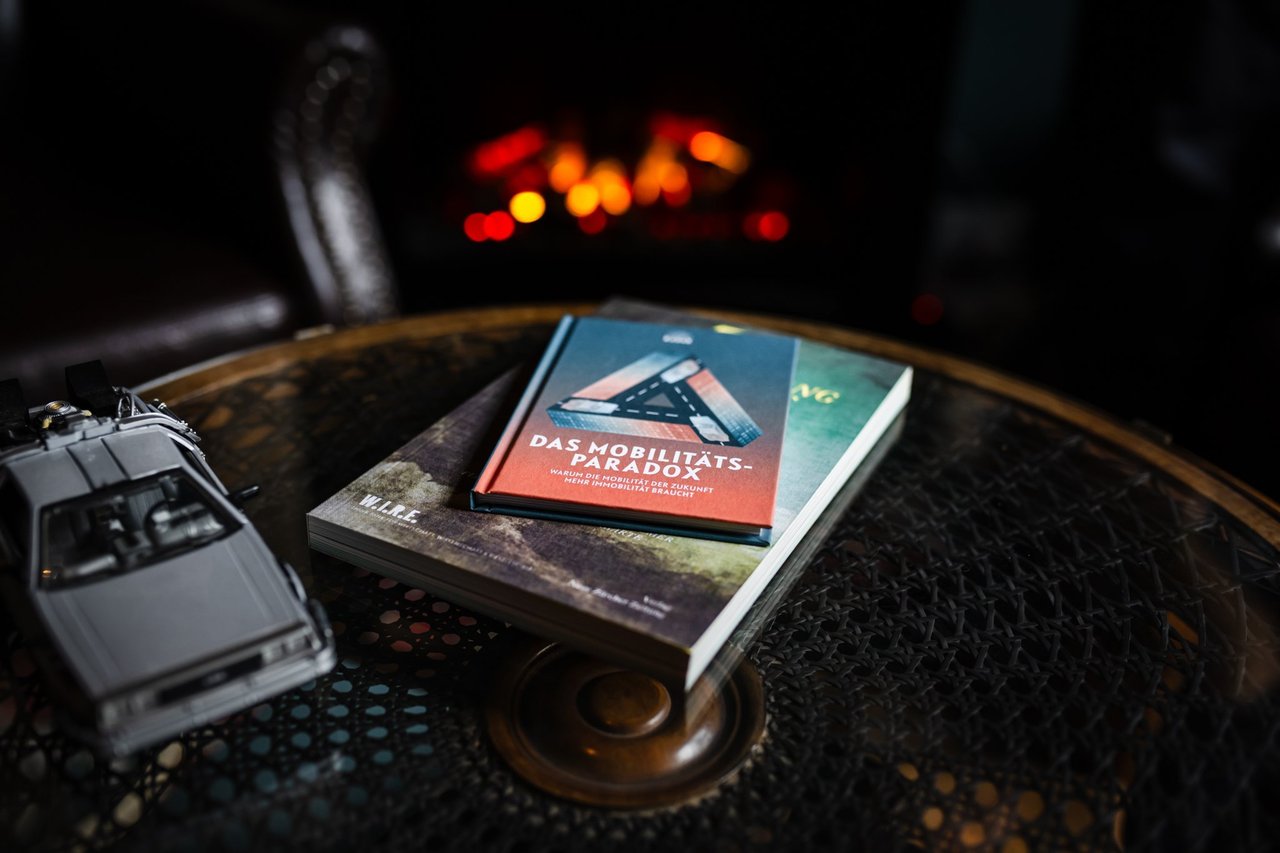
But the car of the future will definitely be electric, right?
First of all, it is absolutely clear that achieving the climate targets is a fundamental necessity – and that electromobility can make a significant contribution to this. However, this theoretical potential is not sufficient. First of all, we need a comprehensive charging infrastructure and affordable vehicles to win over broad sections of the population. The real added value of electric vehicles can also be achieved with Vehicle to Grid solutions that make it possible to use car batteries as storage in the entire energy system. However, building these foundations takes time. The political desire to push this change forward as quickly as possible or even to set a date for it is understandable, but hardly realistic – especially not for structurally weak regions. We will therefore have at least dual systems with EVs and combustion engines for a long time, which of course means more complexity for manufacturers. Ultimately, however, there is hardly any way around technology neutrality, especially since there are legitimate questions about the sustainability of electric cars in terms of material cycles and grey energy, or about the value development and service life of digitally upgraded vehicles. It is obvious that these are not only vulnerable, but due to the high dynamics of digitalisation – like smartphones – they will quickly become obsolete and will therefore have a much shorter half-life than conventional vehicles.
Electric cars are not as popular with many customers as politicians and manufacturers had hoped. How can more sustainable mobility solutions still prevail?
The ideologically motivated attempt by politicians to bypass the natural selection process of the market economy has done the electric motor a disservice; many people now see it as a compulsory technology. In our view, however, technology neutrality is important, which defines the market and not ideology as the basis for innovation. Of course, emission limits can be set in this process. At the same time, we should also think about low-tech solutions that have fewer functions but are characterised by greater stability and a longer service life. But back to the big picture: Even without these limits of transformation, technology is not sufficient for a truly sustainable mobility system. Simply replacing combustion engines with electric vehicles without taking people's behaviour into account is not enough. It is therefore also important to start with the mobility culture, i.e. to clarify whether physical transport is really necessary for each destination and then to choose the most efficient means of transport. This requires linking transport and spatial planning with regional centres where many things can be reached on foot or by bike, fast and reliable public transport, but also different types of cars, the role of which we must transfer to the 21st century.

And what about autonomous driving? Doesn't this technology solve many of our traffic problems?
The technology is fascinating, no doubt. But there is a belief that we could solve the traffic jam problem if more people could auto-pilot themselves to work. But when passengers switch from trains back to comfortable, autonomous cars, our streets will be even busier than before. I also believe that people will want to continue to be self-sufficient. The right to free movement is a human right that we have fought for. I doubt whether the role of the passive passenger really corresponds to our needs and self-image. I can certainly see the benefit of autonomous vehicles on sections of highway or specific zones, but a complete replacement of self-driving is neither realistic nor desirable.
The car also has an image problem today: it no longer succeeds in fascinating broad sections of the population. And it polarises more than ever. Why is that?
For a long time, the car played an important social role as a positive status symbol – it stood for freedom and individuality. However, the enormous focus on individual mobility has led to traffic congestion as well as environmental and health risks, which have a massive impact on the quality of life. Additionally, the diversity of cars used to be crucial for positive perception. But due to the progressive homogenisation processes in the automotive industry, the differences have been lost. This has to do with scaling mechanisms. There is also a lack of courage in the management departments to design new cars in such a way that they are different from one another – and not just all follow the same market research findings.
What do you suggest to make car design less interchangeable again?
I think we should bring responsible people back into the design process. The independent designer who gives an object a shape, who perhaps designs something unexpected and takes a risk, instead of choosing the statistical mean, especially as generative artificial intelligence does and will certainly have an even greater impact on car design in the future. It is therefore important to find ways back to diversity that also enable people to see themselves reflected in a car. I believe that the automotive industry is in crisis because it is no longer able to convey emotions through its products. But such an upgrade also requires a move away from the focus on the car as the primary means of transport.
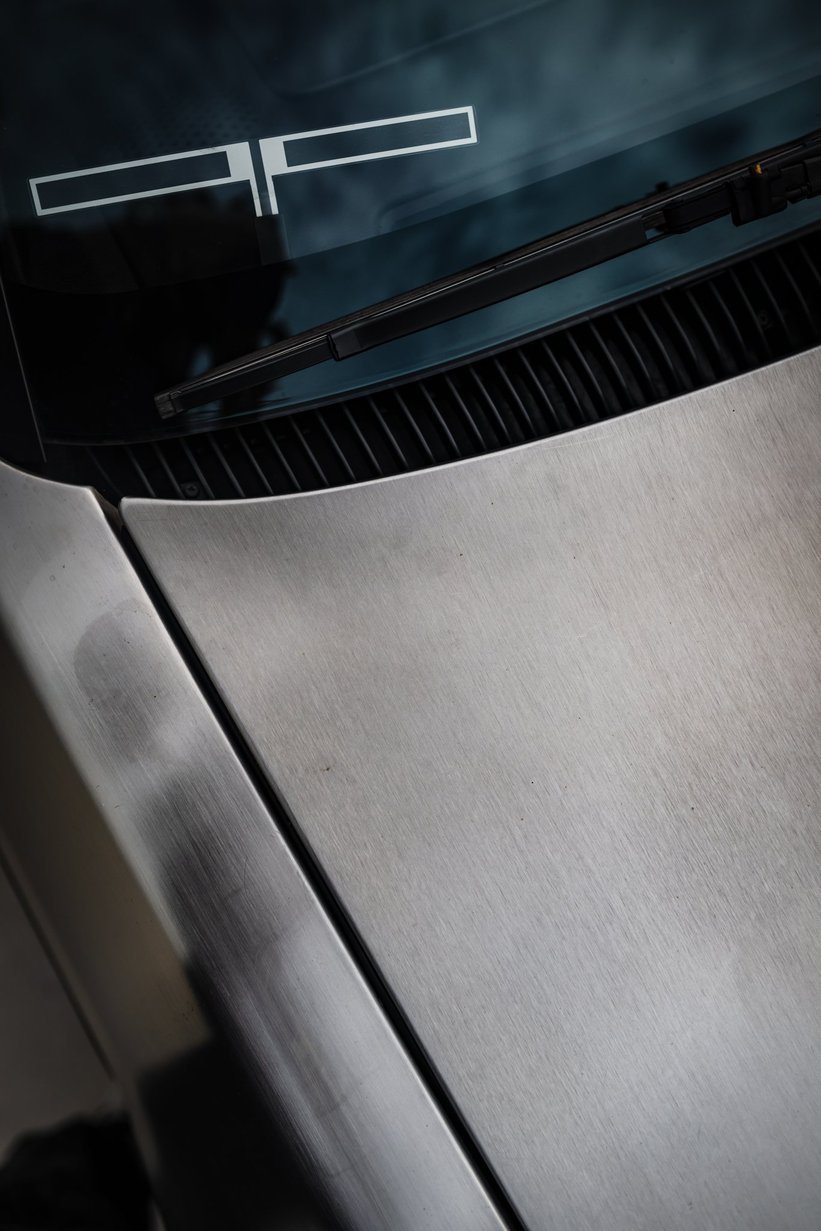
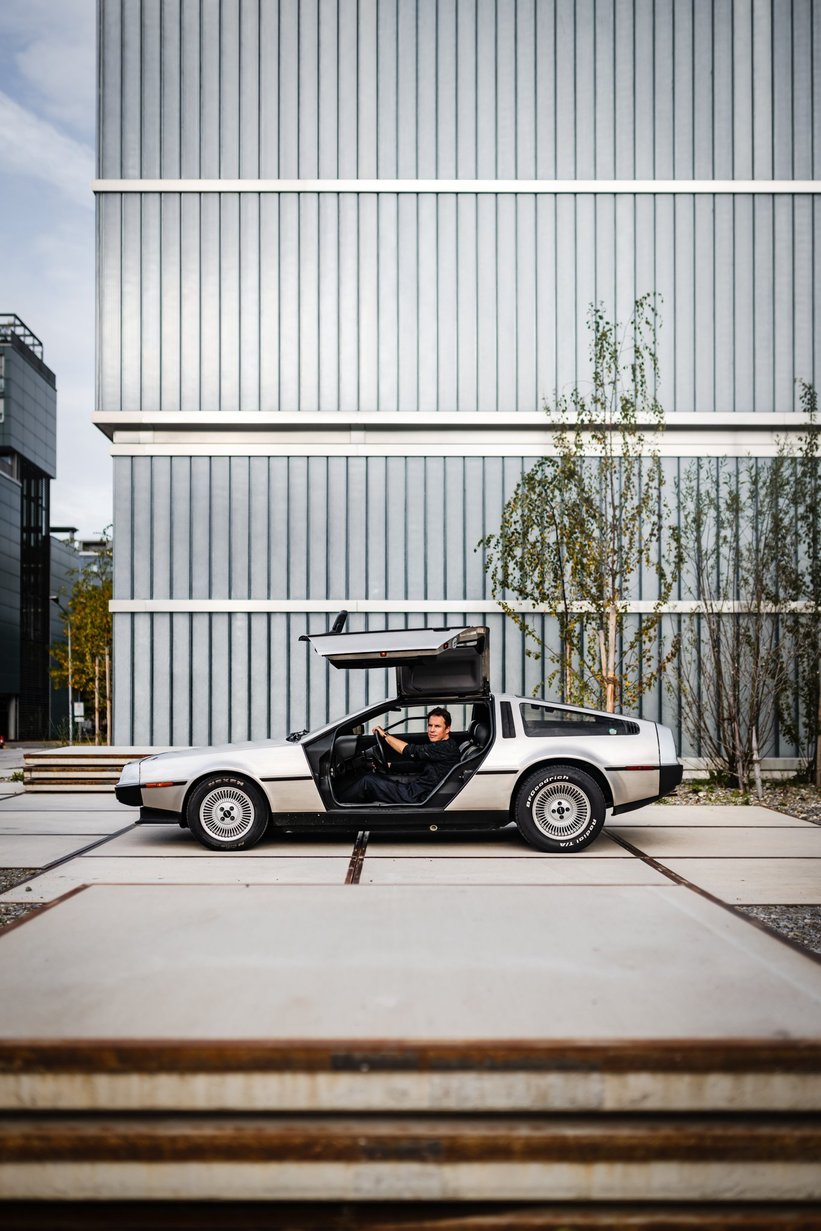
I find it interesting that people continue to be enthusiastic about classic cars. What can we learn from yesterday's cars for tomorrow's mobility?
I believe that we can learn something from classic cars on several levels. Studies show that the average use of old vehicles has little impact on the environment and causes significantly fewer emissions than, for example, the use of smartphones. Sustainability is not just about drive technologies, but also about material cycles: because classic cars are driven, repaired and maintained for a very long time, they are certainly role models for sustainability. However, this repair culture is much more difficult to implement with complex modern cars. The "Right to Repair" initiative launched by the EU lays an important foundation here. The second aspect is the use case: covering long distances with individual means of transport is not a sustainable solution, even with electric drives. I take the train to a business meeting in Bern or Frankfurt, which is much more efficient and also promotes interaction with other people. In social terms, however, the car still allows us to break out of our everyday lives – for the sheer joy of driving, for exploring our own surroundings with a focus on regional tourism. The classic cars that we take out of the garage for a trip at the weekend are, so to speak, the blueprint for the use of the cars of tomorrow.
So the car is changing from a means of transportation to an interface for experiences?
The importance of the car as a central means of transport, which it had in the 20th century, will certainly continue to decline. Realistically, a polarisation is emerging: on the one hand, we will see more cheap and small standard vehicles that serve as consumer goods, while on the other hand, independent cars can once again fascinate by accompanying people on their ventures and at the same time beautifying everyday life with their aesthetics. Manufacturers will therefore differentiate in the future – with a greater variety of vehicles for different segments and increased creativity in design. Things that have been built by real people with more attention to detail will also be valued more by their users. The longevity of cars should also return to the focus of the social debate: leasing a new electric car every three years is not a solution – neither ecologically nor socially.
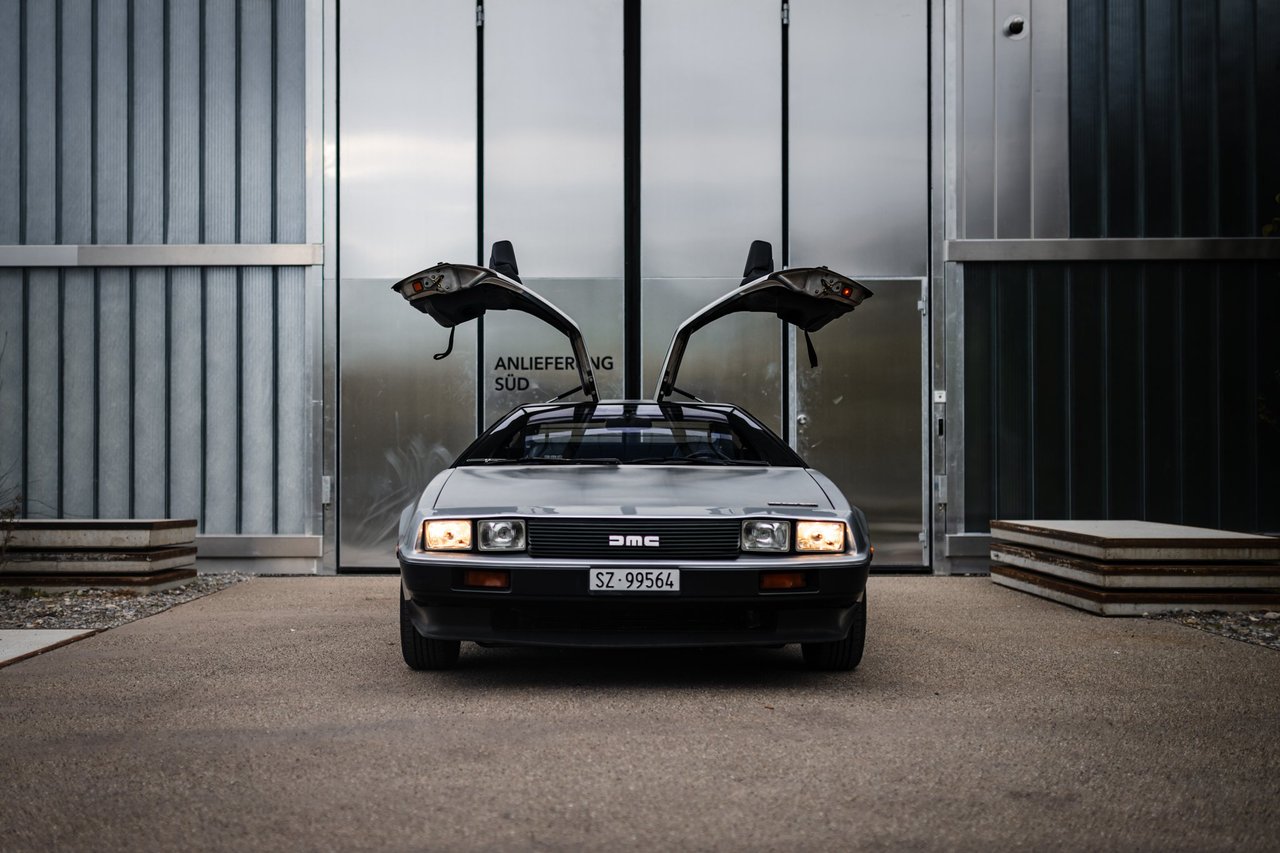
The European car industry is in crisis because sales are collapsing in growth markets such as China, where local electric cars are selling better. Are longer-lasting niche cars really the solution?
When it comes to electromobility and digitalisation, the European automotive industry has certainly missed out on some of the megatrends. At the same time, it must of course be noted that here in Europe we have very high standards for the quality, reliability and range of cars, which electric vehicles simply cannot yet keep up with. Here, customers were asked to replace a very sophisticated product with an inferior one – with corresponding resistance. In emerging countries, where many people have never had a car, the situation is very different, especially when a local government clearly intervenes in the economy and subsidises local brands. If we in Europe want to maintain our prosperity at a stable level in this global market situation – and I deliberately do not speak about increasing it – then we must continue the growth debate that the Club of Rome initiated a long time ago. Whether we like it or not, we will not be able to avoid restructuring. But I believe that there is a place for a European automotive industry if it focuses on quality, individuality, sustainability through longevity and security against cyber attacks. At the same time, we should place greater emphasis on technology neutrality and, for example, push forward the development of biofuels rather than putting all our eggs in one basket.
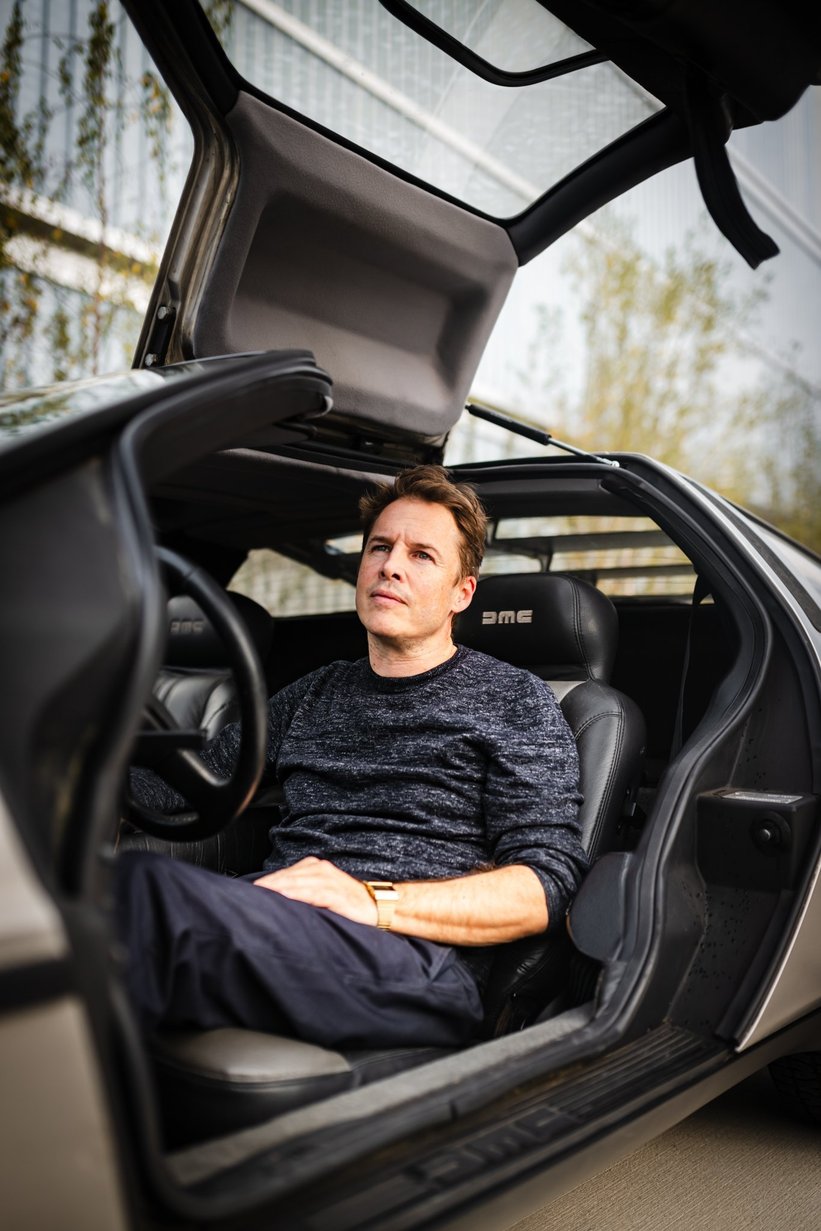
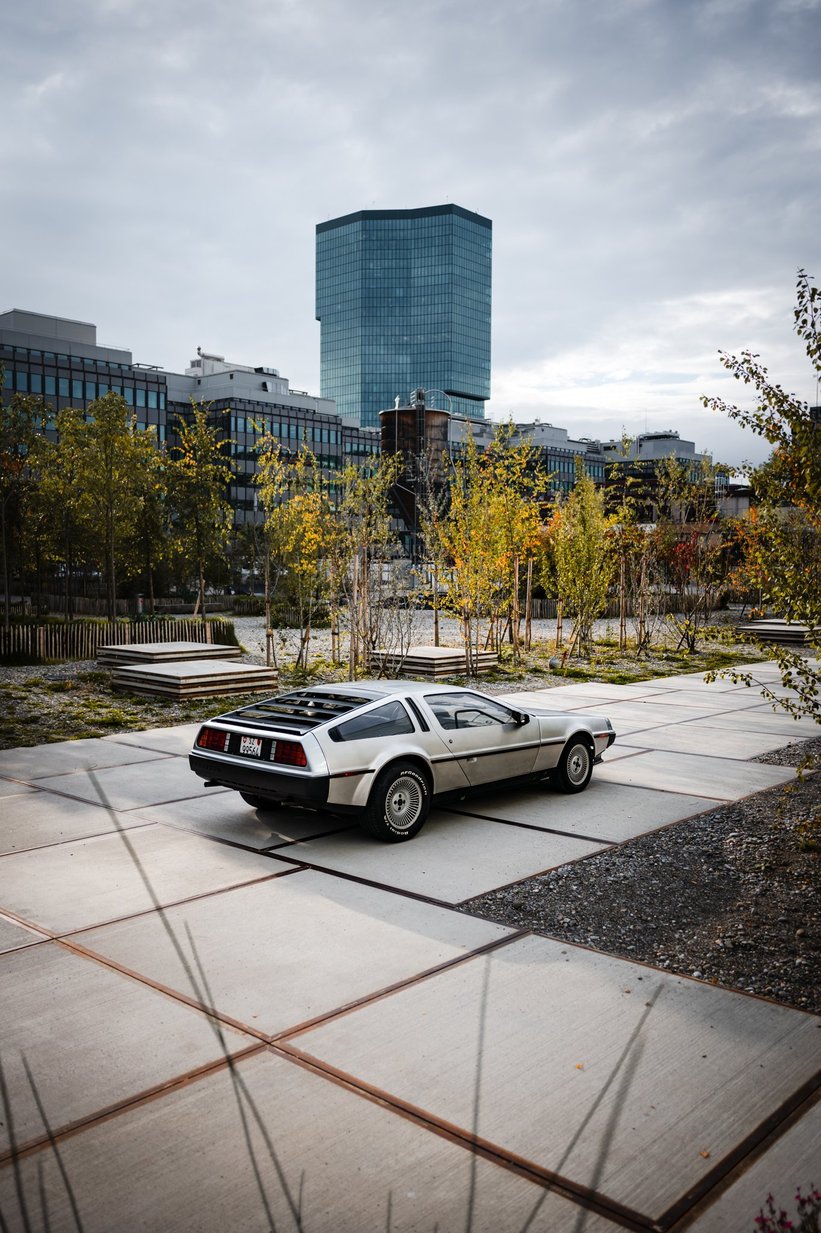
Time for a change of scene. We follow the silver DeLorean through Zurich’s Kreis 5 – a former industrial district that has been transformed into a trendy shopping and office quarter over the last two decades – and along curved streets to one of the hills overlooking the city. Stephan lives here with his family in a brutalist house designed by the Swiss architect Hans Demarmels in 1962. Open, flowing spacing, staggered mezzanines, exposed concrete with patina, red clay brick floors and amazing views outside the window slits – this is certainly one of the most unusual buildings in the city. With a panoramic view over the high-rises of Kreis 5, Lake Zurich and the Glarus Alps in the haze, we continue our conversation.


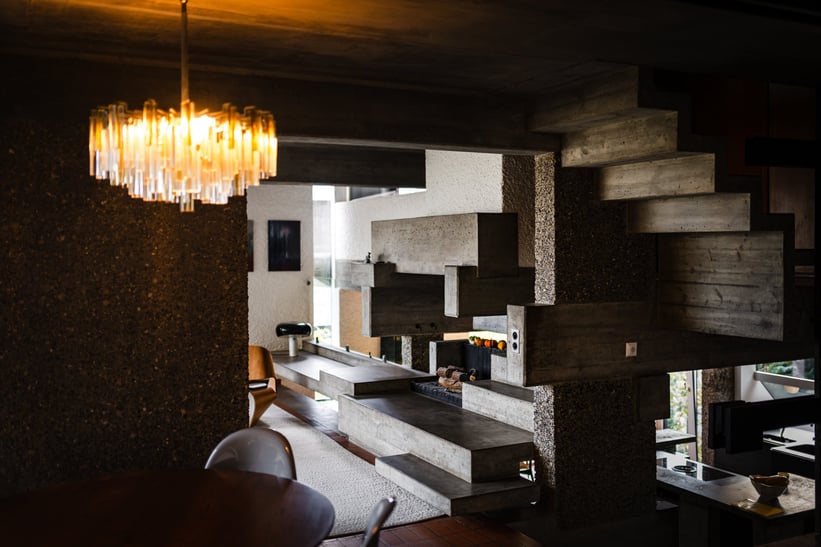
Your DMC DeLorean, this house by Hans Demarmels – these were bold, completely independent ideas and designs that stood out from the mainstream of their time, that took a risk. Do we lack the creative courage today to think and design something truly new?
Absolutely! Today it is much more difficult to invent something that has not yet existed. Whether in music, product design or architecture: the limits of what is possible and conceivable have been explored over the last few decades. Accordingly, new designs are often references to existing ones. At the same time, a remix culture has established itself, not only in music, which creates something new by combining existing things in new ways. However, today's design culture is also characterized by a high demand for convenience or a lack of courage and pandering to the mainstream, especially in the environment of large companies. Even Elon Musk's robotaxi draws formal inspiration from science fiction classics such as iRobot and Blade Runner rather than creating something really new. Artificial intelligence will initially accentuate this development because, by definition, it draws on existing designs and derives variants from them. This changes the role of humans away from active design and towards selecting existing ideas. This can bring efficiency, but we should retain the competence of design. Education plays an important role in ensuring that core skills from writing to design are strengthened and developed further – especially in skilled trades. Here we need future-oriented job profiles that help such jobs remain attractive to young people.


How do you get a generation that is heavily influenced by repetitive digital culture to think about things in a completely new way?
Above all, it is important to encourage self-confidence, to do things independently and autonomously, even if a machine might come up with a suggestion more quickly. This ability to differentiate has always distinguished humanity – and it is becoming even more important. This applies to music, architecture, and the automotive world. The positive reactions I experience when I drive through the city in my DeLorean are, for me, the best proof that we finally have to go our own ways again aesthetically. Of course, AI can be a help in visualizing new ideas if it is used correctly. And why not? The main thing is that you stay active, keep control, and don't slip into passivity. The Canadian pianist and rapper Chilly Gonzales summed it up at a recent concert: “Either you make the algorithm your bitch, or the algorithm makes you it's bitch.” I used to listen to a lot of punk music. And I think we need to rediscover this punk spirit of breaking up existing systems as underdogs.
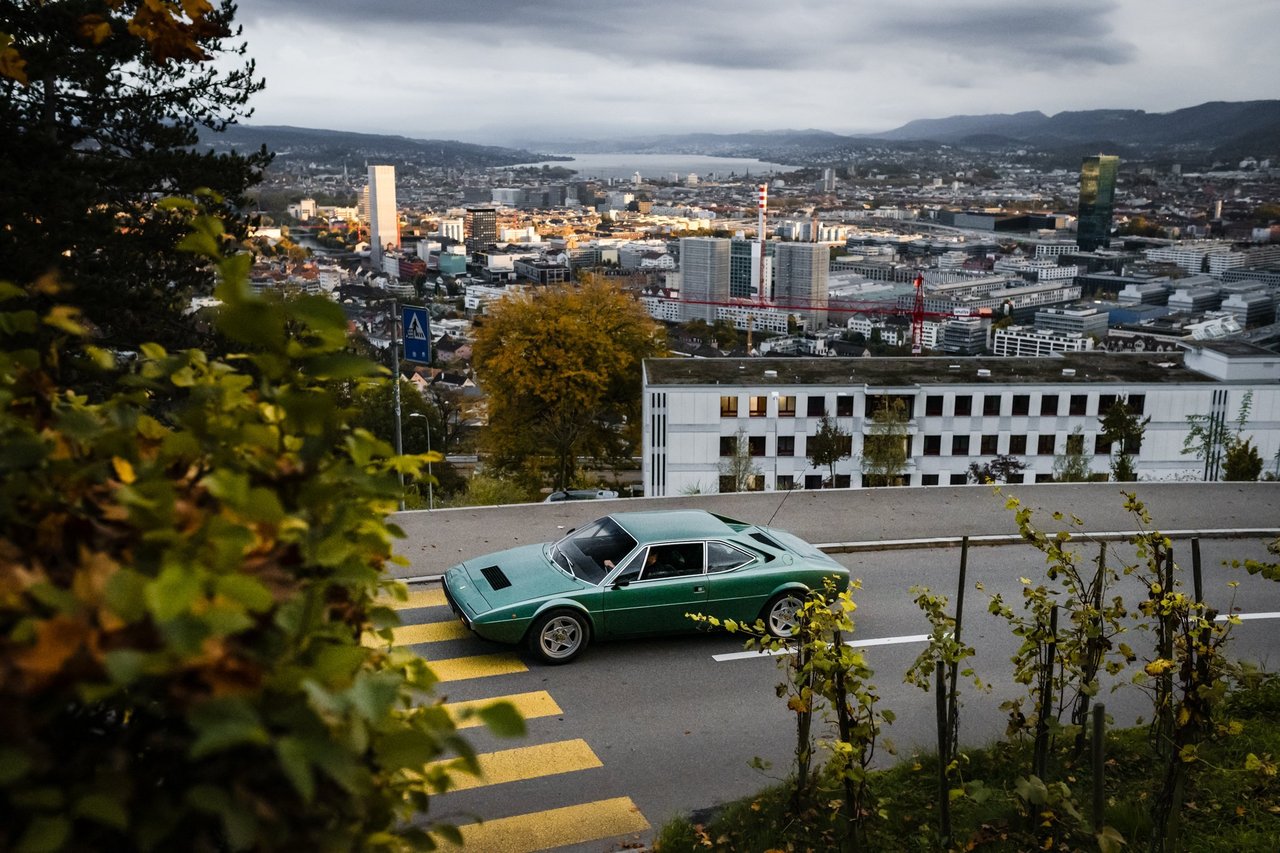

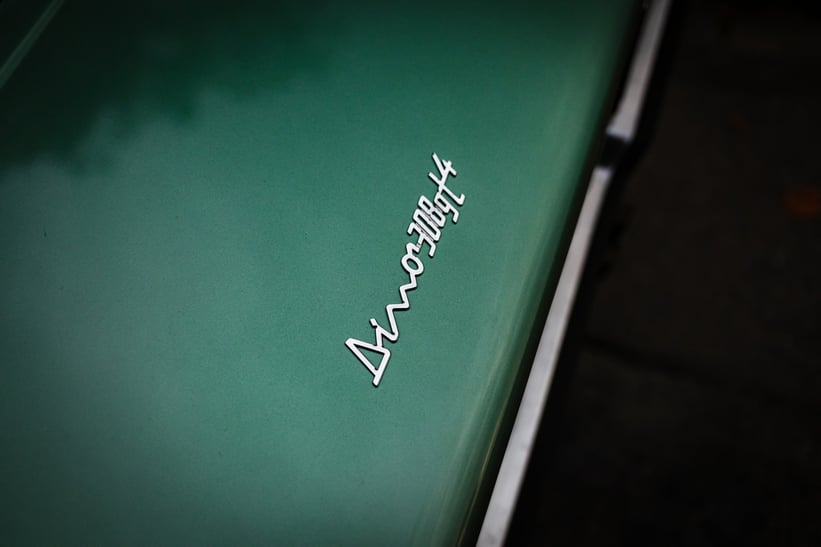
Back to cars. Another automotive design statement in your garage is a green Ferrari 308 GT4. How does this Dino fit into this series of revolutionary punk designs?
Good comparison! I never had a particularly great affection for classic Ferraris and the clichés associated with them or other luxury vehicles. That's why I was interested in the Dino, which was long considered an Anti-Ferrari. Bertone originally suggested the design to Lamborghini. In this sense, the angular design and anti-establishment actually have a punk feel to them. Thanks to the mid-engine, however, it is also a real driving machine and the car that I like to drive the most – I have already travelled to Liguria in it with my daughter.
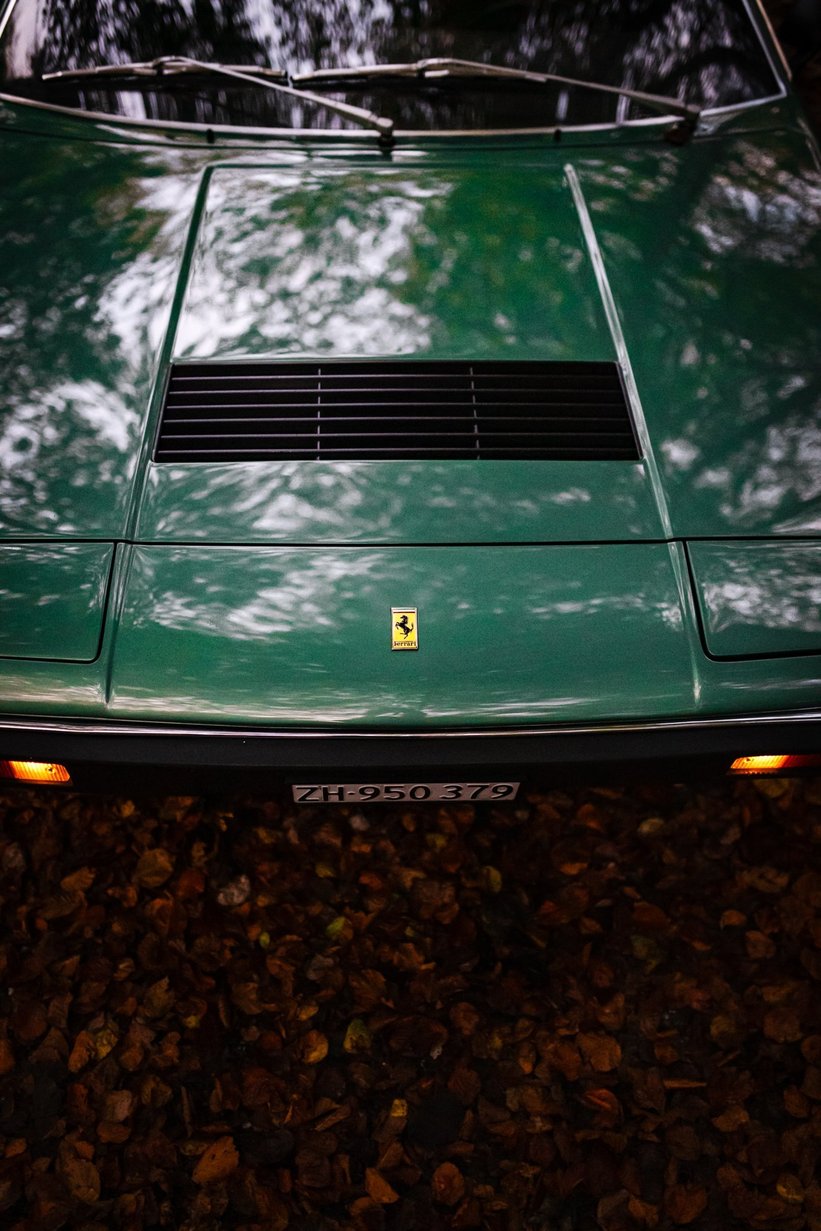
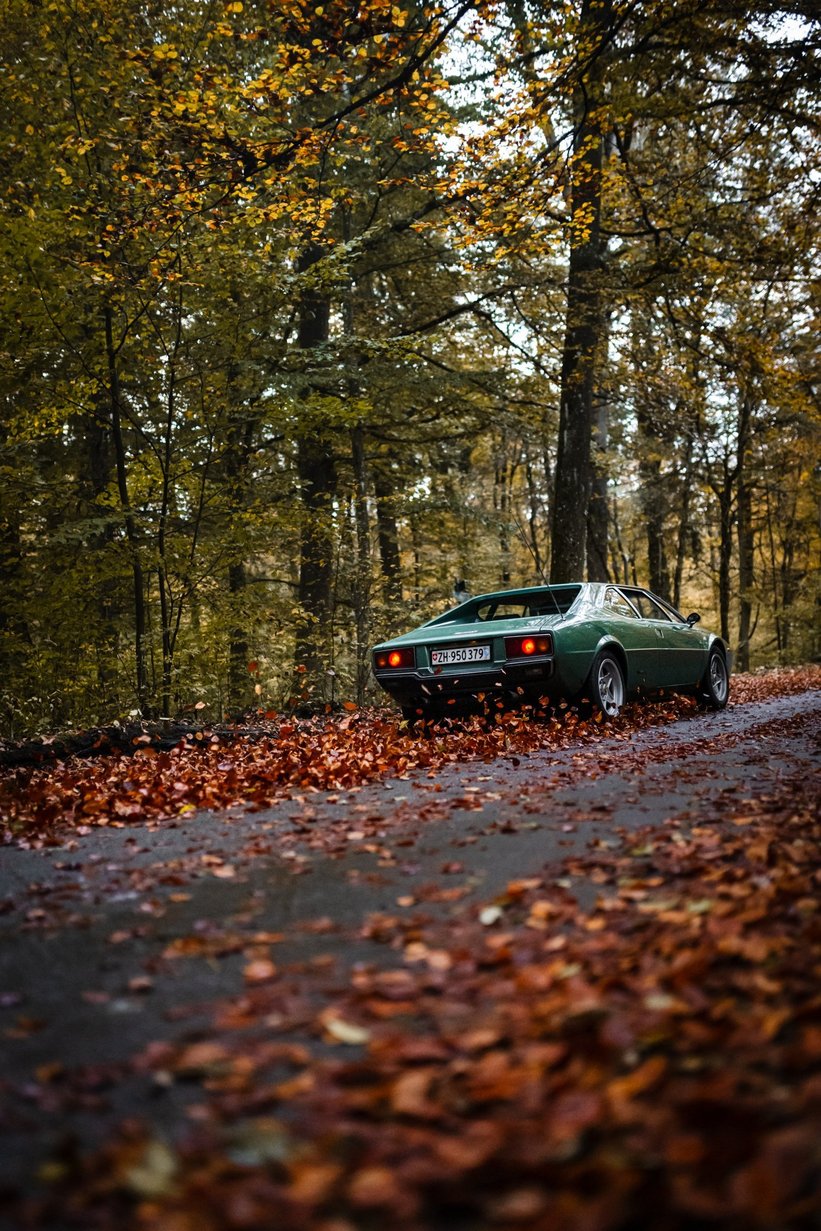
After a short drive over the nearby Käferberg with the roaring Dino, daylight is already fading and it is time to get the last and most exalted car out of the garage: a dark blue Aston Martin Lagonda from 1985. We take a seat in the back on dark red leather and in the light of the street lamps we glide down into the city again, into the nightlife.
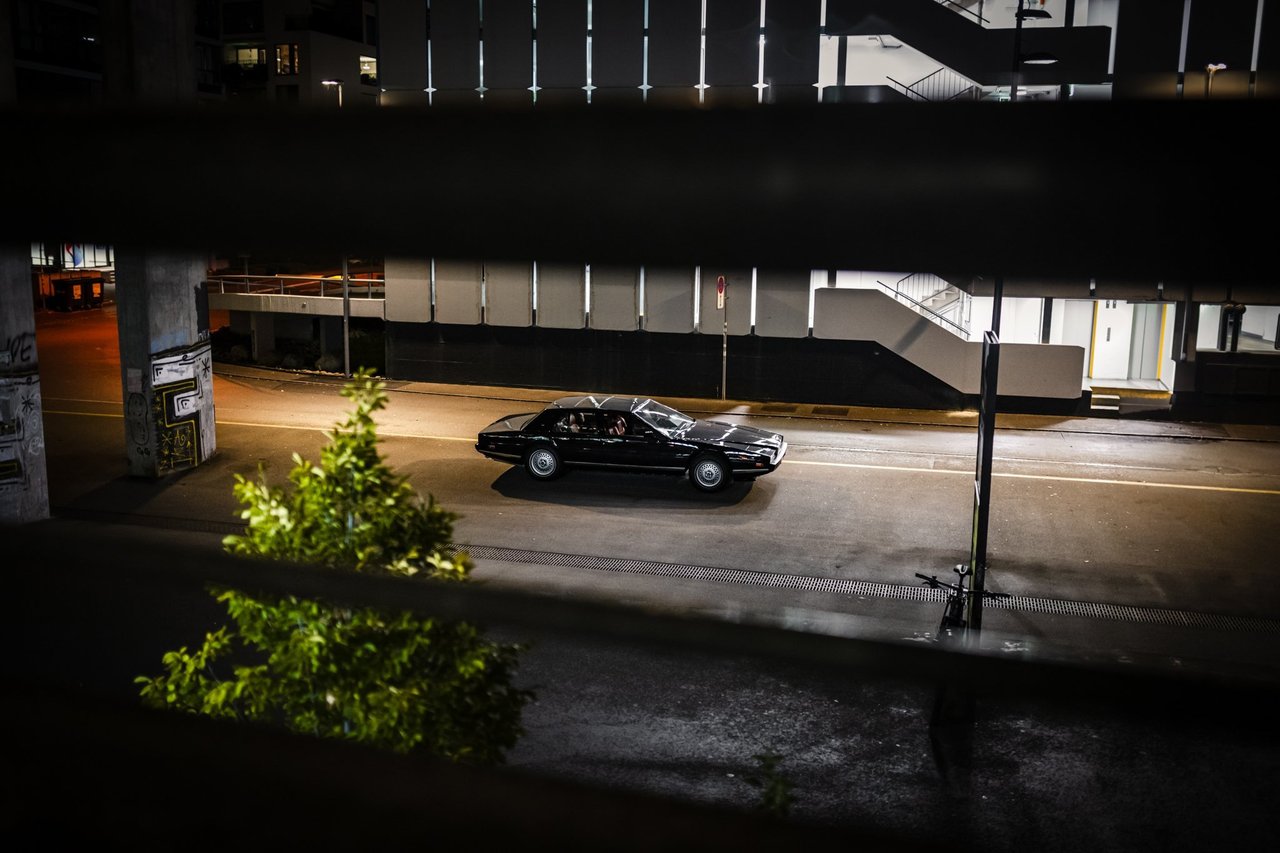
What fascinates you about the Aston Martin Lagonda?
When I was ten years old, I saw one for the first time on the street in London - the sight simply blew me away. The design looks like it comes from another world. But the story of the designer William Towns, who designed the Lagonda when Aston Martin was already insolvent, is just as exciting. The development budget for the entire car was spent on the display alone. The megalomania and the courage to build this car so excessively and ahead of its time at that time fascinates me.
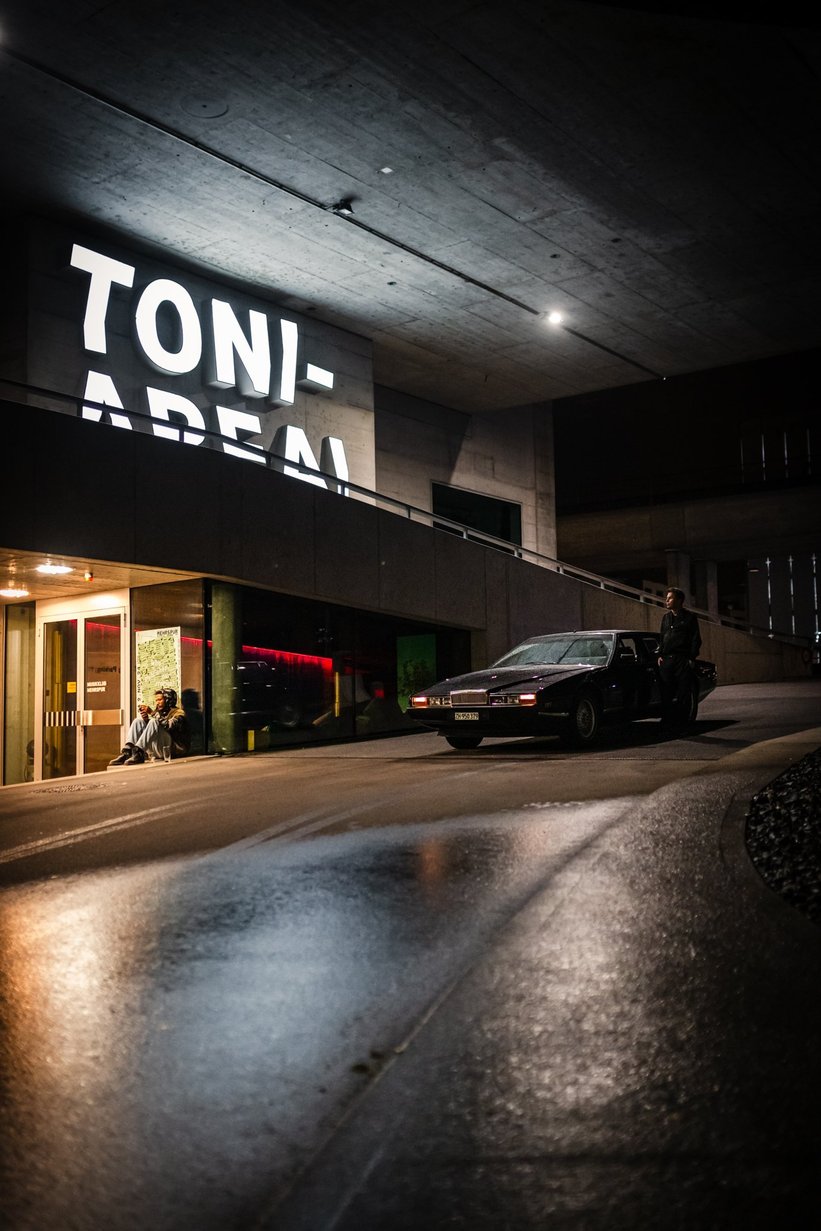
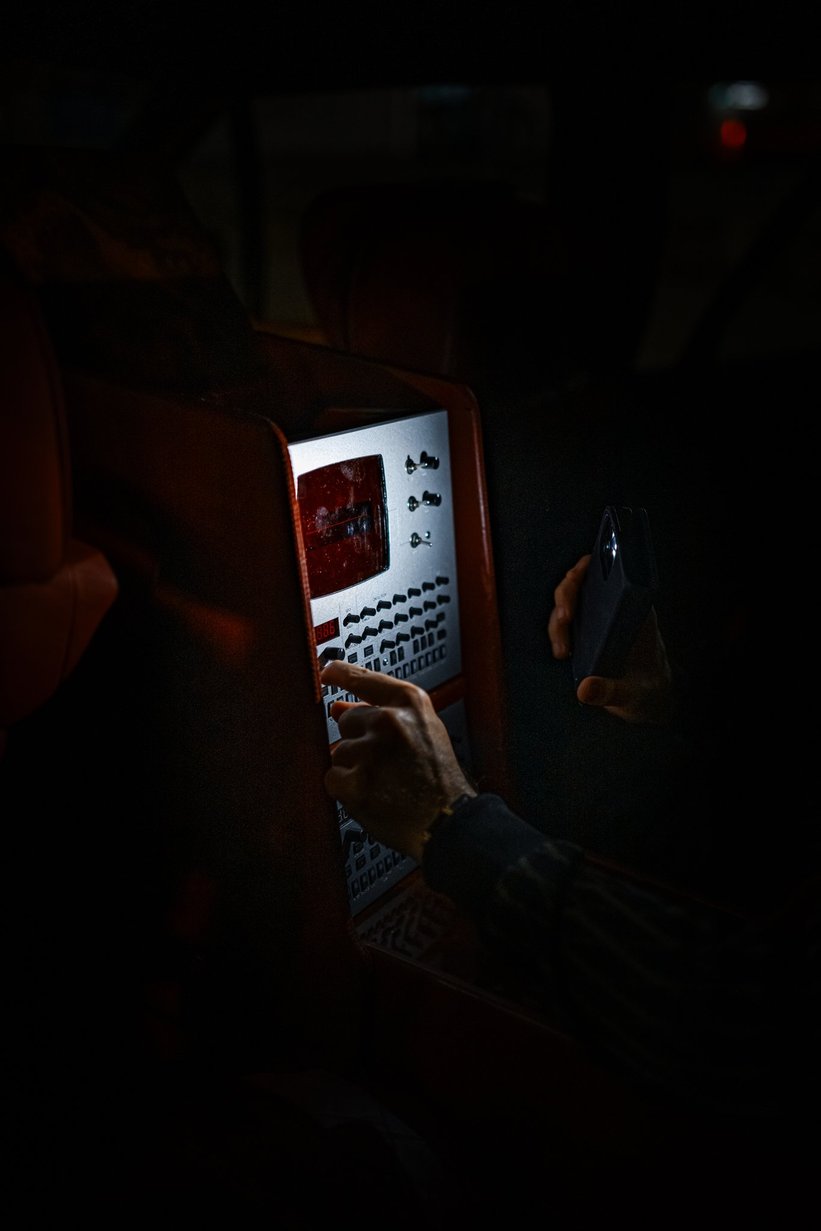
But the story of your Lagonda is even more special.
Exactly, it's a model from the second series that was customised for the Sultan of Oman by the British specialist Tickford. Fortunately, it's extremely plain on the outside, but it's got a screen, a VHS recorder and a crystal bar – we fill it with syrup on family trips.
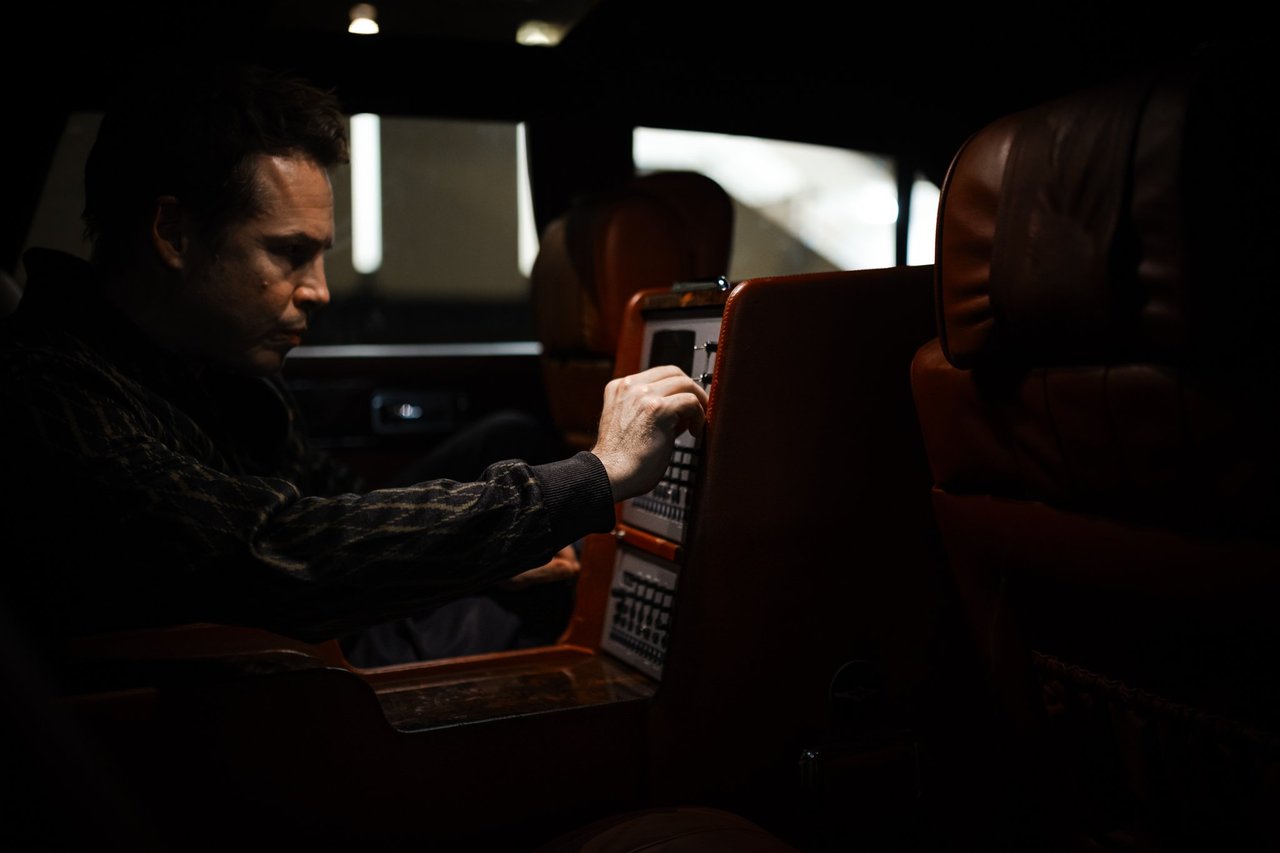
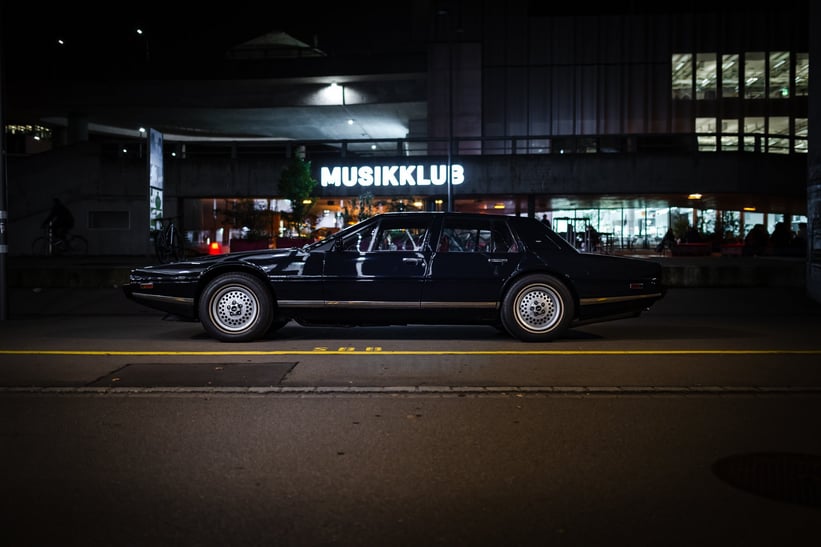

But you customised the car even further yourself, right? What did you change?
I wanted to develop a counter-position to the digital cars that do everything for you these days, that basically disempower people. And because I have an affinity for electronic music myself and also own a few old-school synthesisers that I occasionally let off steam on, I came up with the idea of installing a synthesiser. This way the passengers in the back can play live music for the driver in the front. I then called the Swedish artist and designer Love Hultén and he built me a system with two components – a drum machine and a small synthesiser with an additional oscillator that displays the waves.
Great! If you could have one artist play a live set for you on your commute, who would it be?
That would be Richard D. James, aka Aphex Twin. He would certainly get the most out of the device.

You deal with the big questions of mobility every day. How do you see the future of your own classic cars?
I still enjoy driving the cars. Being on the road gives me space and time for thoughts and conversations. The classics are hand-built and embody a sense of grounding in the truest sense of the word, which relaxes me more than any time spent in an artificial wellness resort. Last but not least, they are also an important bridge to my work at W.I.R.E. – they keep bringing me into contact with people who critically assess current developments in the area of tension between the past and the day after tomorrow and who are passionate about shaping the future with their heads, hands and tools. Last but not least, they also form a bridge to the next generation. My daughters have already discussed among themselves who will take over which of the cars. (laughs)
Fotos: Andrea Klainguti für Classic Driver © 2025












































































